Family : Chaetodontidae

Text © Giuseppe Mazza

English translation by Mario Beltramini
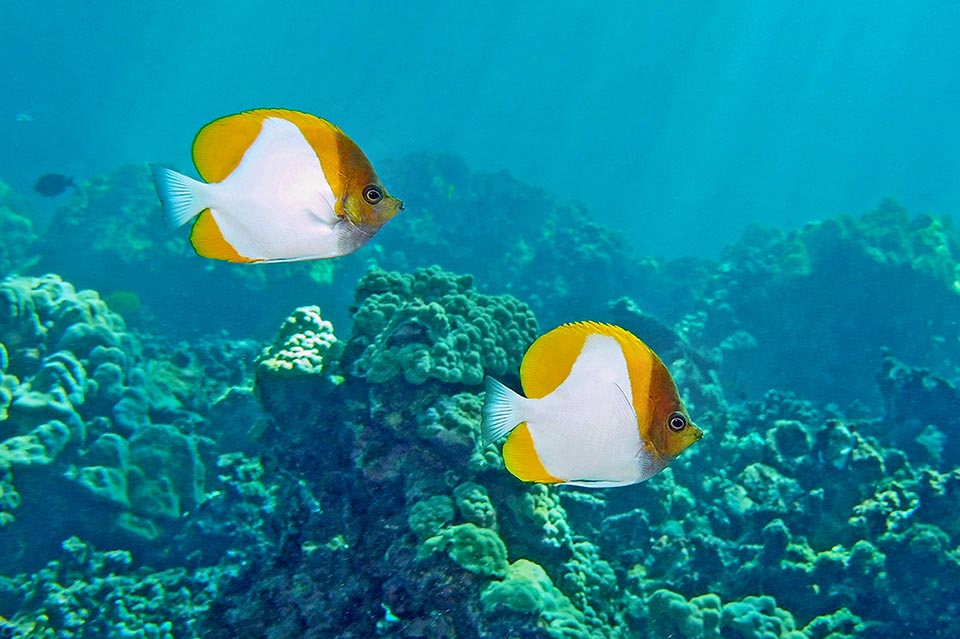
The Pyramid butterflyfish (Hemitaurichthys polylepis), so called due to the clear drawing on the body, lives in the Pacific and East Indian tropical waters © Barry Fackler
The unusual and showy Pyramid butter-flyfish (Hemitaurichthys polylepis Bleeker, 1857) belongs to the class of Actinopterygii, the ray-finned fishes, to the order of Perciformes and to the family of the Chaetodontidae.
The name of the genus Hemitaurichthys comes from the Greek “hemi”, half, “taureia”, bull skin and “ichthys”, fish. Perhaps the white pattern, squared, evokes a half skin of bull and it seems that Bleeker should have also considered the Malaysian appellation of “ikan-karbauw”, which means “buffalo fish”.
The name of the species polylepis comes from the Greek “polys”, much and “lepis”, scale, flake, with reference to the numerous scales.
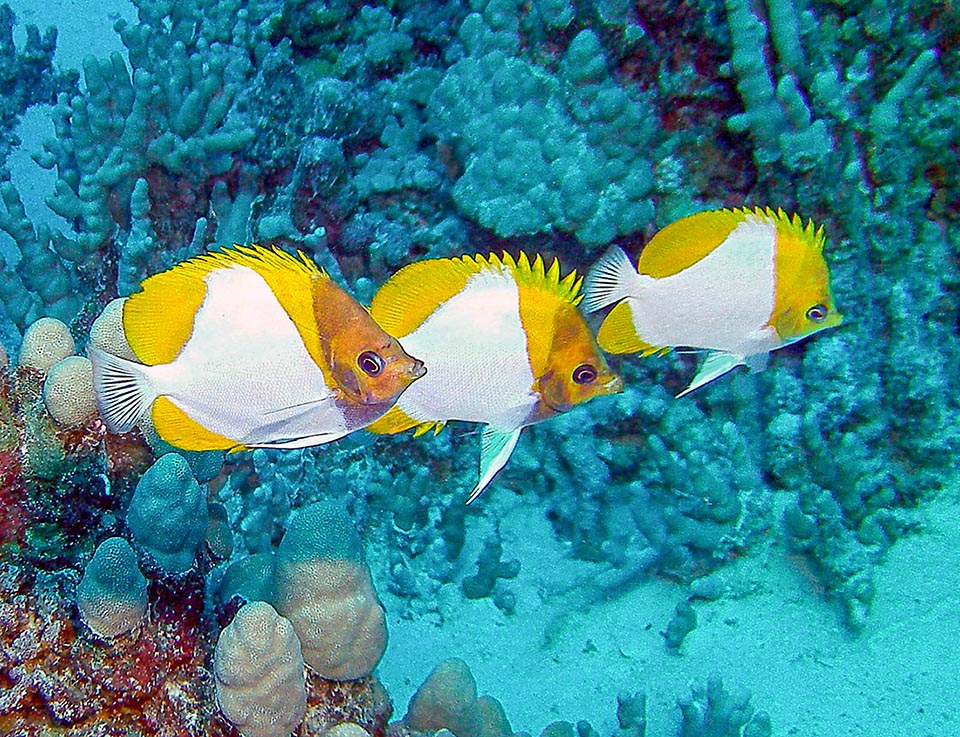
Atypical butterflyfish, it doesn’t live hidden among the madrepores but often swims on the outer side of the reefs in the currents feeding on zooplankton © Barry Fackler
Zoogeography
It is present in the tropical waters of the Pacific and the eastern Indian Ocean.
Just to give an idea, we find it at the Andaman Islands, Christmas Island, in Malaysia, Australia, Indonesia, New Guinea, Micronesia, New Caledonia, Philippines, Taiwan and China up to southern Japan.
Southward, it reaches Easter Island, eastward, the Kiribati islands, the Hawaii and Cocos Island.
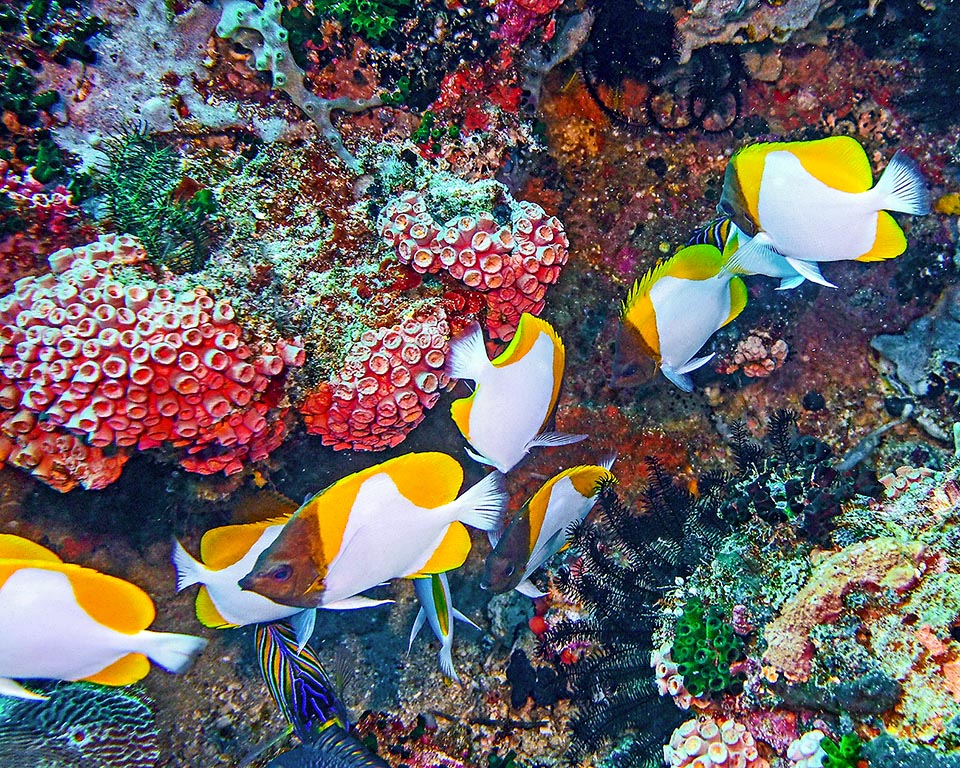
Moreover doesn’t move alone or in pairs but in groups, forming even numerous schools © Karine Marangon
Ecology-Habitat
It lives in the madrepores formations up to 40 m of depth, but on the outer borders of the reefs, in the midst of the currents.
Morpho-physiology
The pyramid butterflysh can reach the 18 cm. The body is flat, more or less squared, with slightly elongated snout. The dorsal fin has 12 spiny rays and 23-23 soft; the anal has 3 spiny rays and 19-21 soft; the ventral and the pectoral ones are unarmed and the caudal is more or less blunt.
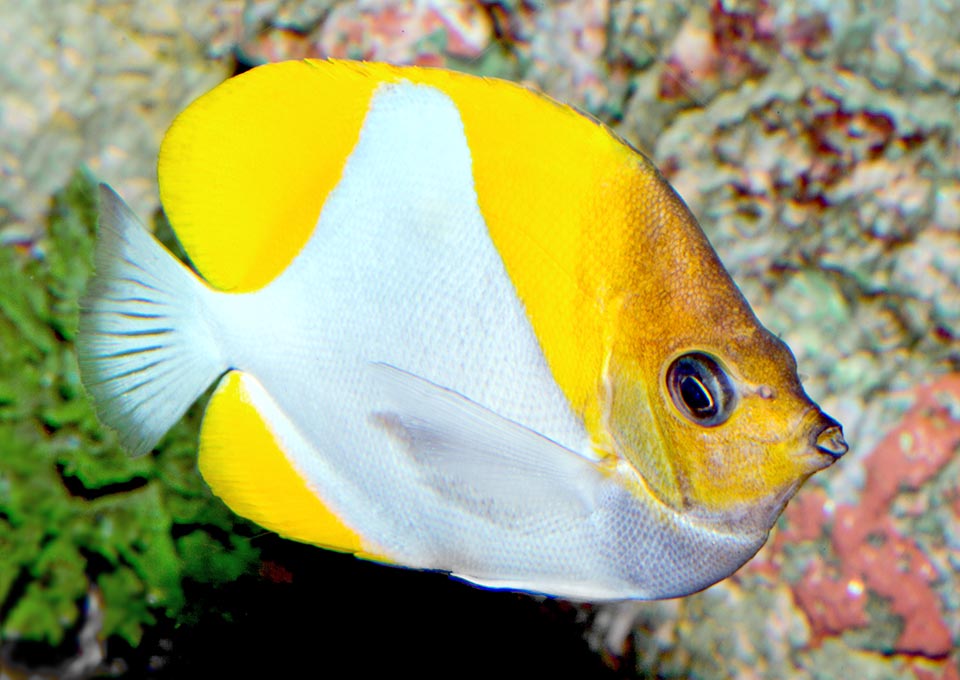
It may reach 18 cm in length. The body, flat and squared when its fins are extended, has showy scales. The snout has a small protractile mouth © Giuseppe Mazza
On the yellow background stands out a white pyramid in the middle of the body which extends up to the tail and to the ventral fins. This is the main characteristic of the species, which has suggested the common name of pyramid butterflyfish in various countries. For once, the eye is not camouflaged by a black band, but it is true that there is a facial mask, of brown colour, darker towards the back.
Ethology-Reproductive Biology
The Hemitaurichthys polylepis has a decidedly atypical behaviour with respect to the usual butterflyfishes: it does not live in sheltered zones among the madrepores, but in the midst of the currents which carry the zooplankton which it eats, and, above all, it does not swim alone or in small groups, but in crowded schools.
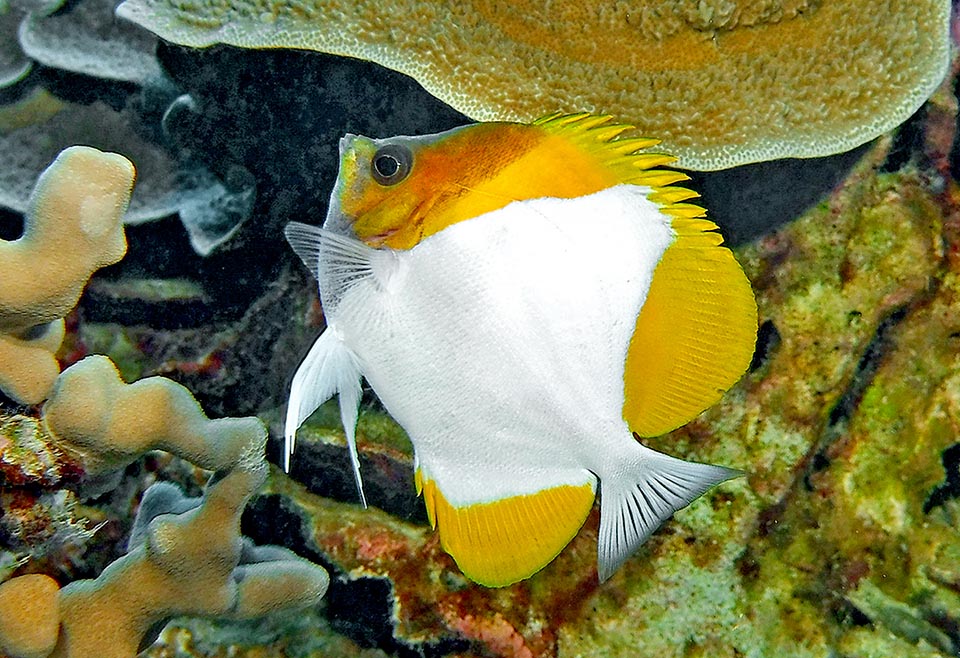
It is not territorial because food abounds, but even if it lives in groups the fecundation remains a matter of couple. Eggs are entrusted to currents and is not endangered © Barry Fackler
It is not territorial because the food is abundant and can calmly eat all the day long without bothering the congeners. After the fecundation, which is not collective, but is a couple affairs, the parents entrust the eggs to the currents.
The populations can double in less than 15 months and seen that these fishes have a diet based on wandering organisms, they are less dependant than the corals from the climate changes, it is not an endangered species. The fishing vulnerability index is also very low: just 10 out of 100.
Synonyms
Chaetodon polylepis Bleeker, 1857.
→ For general information about FISH please click here.
→ For general information about BONY FISH please click here
→ For general information about CARTILAGINOUS FISH please click here.
→ To appreciate the BIODIVERSITY of BONY FISH please click here.
→ To appreciate the BIODIVERSITY of CARTILAGINOUS FISH please click here.
